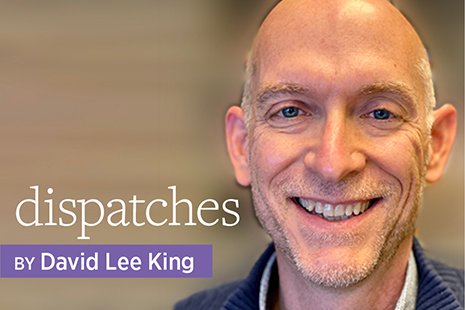
It’s true that people crave connection, to be acknowledged and listened to. But they’re not always looking to mimic real-world connections online, and an organization that tries to position itself as a new best friend on social media can come across as fake. So how can libraries strike a balance, demonstrating authentic engagement with a patron’s experiences, whether in person or via a digital transaction?
Most libraries use one or more library engagement platforms—such as newsletters, mobile apps, or reservation systems—for communications like notifying customers about upcoming events or inviting them to browse materials and check something out. These interactions are touchpoints where the library and customer connect, not unlike a physical reference or circulation desk.
Let’s consider how libraries can make use of common engagement platforms:
Library catalogs. The catalog experience is filled with touchpoints, from searching for something to read or watch to putting that selection on hold. Yet they don’t provide much room for customer engagement with the library. You can enhance catalogs using the direct email function built into some newer systems to send automated emails, like library card sign-up welcomes that pitch lesser-known services or offer reminders to make use of a card. Some libraries share recommendations based on reading interests, announce new acquisitions, or send birthday greetings.
E-newsletters. Leverage your email lists to get library information into the hands (and inboxes) of your customers. Most e-newsletter products require that you create original content; this can be easy to do if you pull content from your library’s news releases or blog posts and create accompanying book lists. Many of these systems can also track interactions, data you can use to report to your board to demonstrate engagement. Want to further simplify the process? A product like LibraryAware can curate newsletters for you that provide stories and links to material in your library’s catalog.
Reservations. Many libraries have events, classes, or meeting rooms that require reservations. Customers are empowered when they use automated software to sign up for something, and it gives you direct insight as to what types of programs they are interested in.
Pickup and delivery services. During the pandemic, many libraries provided contactless services such as delivery and curbside pickup—services that are likely here to stay, presenting an exciting growth area for libraries. As we adapted our operations at Topeka and Shawnee County (Kans.) Public Library (TSCPL), we started using Springshare Pickup Manager to facilitate our curbside service, which provides another touchpoint.
Mobile apps. To maintain customer interest, make sure your app is useful. Your library probably has other mobile apps such as Flipster, Hoopla, LinkedIn Learning, and OverDrive’s Libby, each providing different touchpoints for patrons. Continually promote these apps and create a “mobile apps” page on your website with links to the Apple and Google Play app stores.
Library engagement via software can sometimes feel like invading our customers’ space, especially when we are talking about ads, push notifications, or direct marketing via email. Here’s the thing: Customers are used to this kind of engagement; in fact, they expect it. If some touchpoints are irritating, the tradeoff is that some are truly meaningful, building on positive associations with the library and the materials, services, and programming it offers.
What are you doing to engage your customers? Library engagement platforms can connect to them beyond the four walls of the building and reach them where they are. I’d advise all libraries to explore the emerging opportunities these platforms offer and use them to interact with their communities in new ways.
Adapted from “Library Engagement Platforms,” Library Technology Reports vol. 58, no. 1 (Jan. 2022). Read more from Library Technology Reports.


